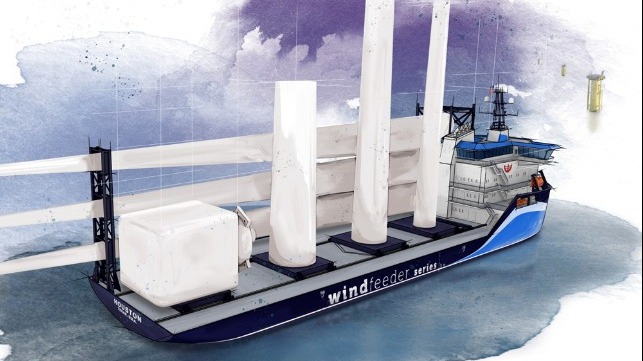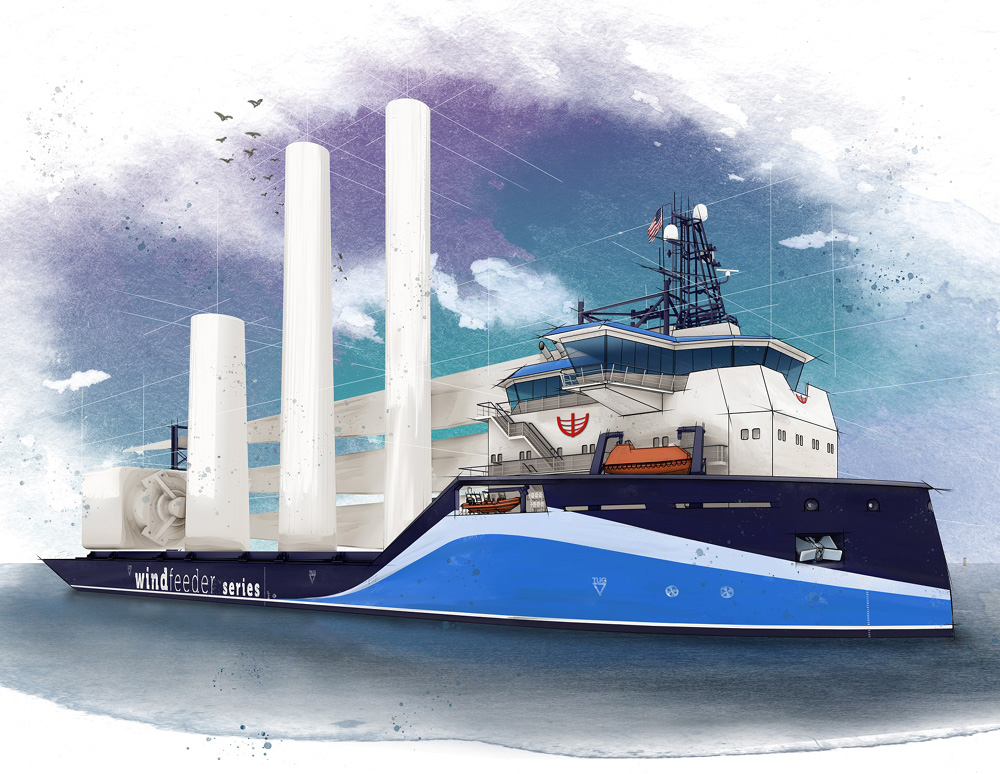Offshore Wind Feeder Vessel Concept Designed for U.S. East Coast Ops

To meet the demands of operating installation vessels in the waters off the East Coast of the United States, a new design is being proposed that incorporates motion compensation technology. The concept vessel also addressed the U.S. cabotage regulations as it is designed to act as a supply or feeder ship transporting and transferring components to a U.S.-flagged installation vessel.
“The United States is ambitious in its plans to grow the installed offshore wind power. The only viable way to realize this goal while complying with the Jones Act is utilizing offshore wind feeder vessels,” says Todd Allen, VP Business Development at C-Job Naval Architects, designers of the proposed ship. “Together with our strategic partner Ampelmann, we have created an innovative ship design ready to support construction of U.S. wind farms.”
Ampelmann and C-Job Naval Architects worked together to develop the offshore wind feeder vessel concept with motion compensation technology. The concept design combines Ampelmann motion technology with independent ship design company C-Job Naval Architects. Together they believe they have created a viable solution to support the construction and logistics of offshore wind farms in the United States under the Jones Act.
The state-of-the-art offshore wind feeder vessel has an L-shaped superstructure. This enables the transport of all wind turbine components, including the blades, while keeping the ship itself relatively compact minimizing construction and operational costs. To maximize workability and allow for safe lifting of the components, the feeder vessel features a motion compensation system.
The system uses Ampelmann’s technology to stabilize the components of the wind turbine generator in six degrees of freedom and is designed for safe lifting operations in sea states up to approximately eight feet significant wave height. The compensator is positioned close to the vessel’s center where it can compensate all vessel motions and allows for continued operations even in adverse weather conditions.

The wind turbine components are arranged on the ship with a quick connect grip- and glide system. Cargo pallets can be quickly placed on deck. Once the feeder vessel is at its destination, the system slides the components into place to connect to the motion compensator. The Ampelmann system then compensates all vessel motions, so the crane operator can lift turbine components similarly to an onshore lift.
The motion-compensated wind feeder vessel is designed to provide maximum efficiency and workability during the construction of an offshore wind park. The conventional way of working is that the installation vessel transports the components and then does the installation of the turbines. However, in the U.S. this will not be possible for foreign vessels as it has been announced that the Jones Act cabotage rules will cover offshore wind sites in the same fashion that they have been extended to offshore oil operations.
With this feeder concept, the turbine components are brought to the installation site by the feeder vessel. With two or more vessels per project, this allows the installation vessel to focus on the installation of the turbines while also meet the Jones Act requirements.
